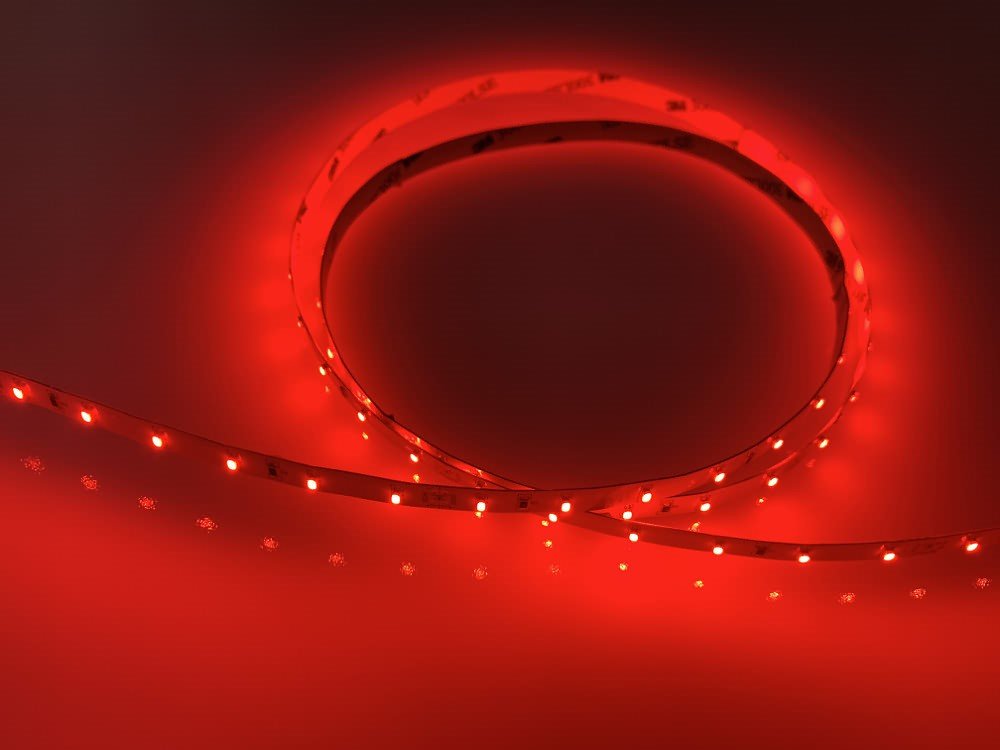LED lighting has transformed the way we use light in everyday life. Among the many options, the red colour LED light stands out for its unique properties, practical applications, and health-related benefits. From home decor and night lighting to skincare and therapy, red LEDs are more than just a vibrant glow — they are a versatile tool for modern living.
In this article, we’ll explore:
- What red LED light is
- The science behind it
- Health and wellness benefits
- Practical applications
- Home and commercial uses
- Buying tips for red LED products
What Is a Red Colour LED Light?
A red colour LED light is a light-emitting diode (LED) that produces red wavelengths, usually between 620–750 nanometers (nm). Unlike traditional incandescent bulbs, LEDs are highly efficient, durable, and available in specific colors without needing filters.
Key features include:
- Energy efficiency – uses less power than traditional bulbs.
- Long lifespan – often lasting 25,000+ hours.
- Targeted wavelength – ideal for health and therapeutic purposes.
The Science Behind Red LED Light
Red LEDs emit light at specific wavelengths that interact with the body and environment in unique ways. For example:
- Shorter wavelengths (620–660 nm): More vibrant red, often used for decoration and indicators.
- Longer wavelengths (660–750 nm): Known for therapeutic effects in skincare and wellness.
This makes red LEDs useful not only for aesthetic purposes but also for red light therapy and biological effects such as stimulating melatonin production for better sleep.
Health and Wellness Benefits of Red Colour LED Light
Improves Sleep
Red light exposure at night does not suppress melatonin like blue light does. This makes it an excellent choice for bedroom night lamps and nurseries.
Supports Skin Health
Red light therapy is widely used in skincare for:
- Reducing wrinkles and fine lines.
- Stimulating collagen production.
- Improving circulation and healing.
Boosts Relaxation
Soft red lighting creates a calm and soothing environment, perfect for meditation, yoga, and stress relief.
Pain Relief and Recovery
Studies suggest red LEDs at therapeutic wavelengths may help reduce inflammation and speed up recovery from muscle injuries.
Practical Applications of Red Colour LED Light
Home Decor
- Accent lights for living rooms.
- Bedside lamps for restful sleep.
- LED strips for ambient glow.
Outdoor Lighting
- Garden pathways and landscape highlights.
- Holiday decorations.
- Safer nighttime lighting that preserves night vision.
Commercial Use
- Bars, restaurants, and clubs use red LEDs to create vibrant atmospheres.
- Retail stores use them to draw attention to products.
Automotive
- Brake lights, tail lights, and dashboard indicators rely heavily on red LEDs.
Safety and Signaling
- Emergency signs and warning indicators often use red LEDs because the human eye detects red quickly.
Therapy and Wellness Devices
- Red light therapy lamps.
- Skincare masks with embedded red LEDs.
- Handheld devices for pain management.
Why Choose Red LEDs Over Other Light Sources?
- Energy Saving – Up to 80% less energy than incandescent bulbs.
- Durability – Resistant to shocks and vibrations.
- Customizable – Available in bulbs, strips, panels, and portable devices.
- Health-Friendly – Unlike blue light, red LEDs support natural circadian rhythms.
How to Use Red Colour LED Lights at Home
- Bedroom Lighting – Use red bedside lamps or LED strips to support better sleep.
- Bathroom Glow – Install red LEDs for a relaxing spa-like experience.
- Gaming Rooms – Red LED strips add a bold and dynamic atmosphere.
- Kitchen Accents – Highlight shelves or counters with warm red light.
- Party Decor – Combine with other colors for vibrant effects.
Things to Consider Before Buying Red Colour LED Lights
Brightness (Lumens)
- Soft glow for bedrooms (50–200 lumens).
- Higher brightness for decor or outdoor use.
Wavelength
- 620–630 nm: Bright, decorative red.
- 660 nm and above: Therapeutic purposes.
Power Source
- Plug-in bulbs.
- Battery-powered portable LEDs.
- USB-powered strips for convenience.
Control Options
- Remote control dimming.
- Smart home compatibility (Alexa, Google, etc.).
Build Quality
- Waterproof options for outdoor use.
- Heat-resistant and long-lasting designs.
Eco-Friendly Aspects of Red LEDs
- Lower carbon footprint – due to efficiency.
- Long lifespan – fewer replacements needed.
- Recyclable components – many LEDs can be disposed of sustainably.
Popular Red LED Products
- Red LED Bulbs – For lamps, bedrooms, and decor.
- Red LED Strips – Flexible and versatile for DIY projects.
- Red Night Lights – Perfect for kids’ rooms and nurseries.
- Red LED Panels – Common in therapy and skincare devices.
- Smart Red LEDs – Control brightness and color with apps.
Conclusion
The red colour LED light is more than just a stylish option — it’s a versatile, health-friendly, and energy-efficient choice for modern living. Whether you’re looking to improve your sleep, upgrade your home ambiance, or explore therapeutic benefits, red LEDs are a smart and functional investment.
With so many uses across homes, businesses, healthcare, and technology, red LED lighting is here to stay — offering warmth, wellness, and efficiency in one glowing package.
FAQs
1. Is red LED light good for sleep?
Yes, red LEDs don’t interfere with melatonin, making them ideal for nighttime lighting.
2. Can red LED light help with skin care?
Yes, red light therapy is proven to boost collagen and reduce fine lines.
3. Are red LEDs safe for eyes?
Yes, at normal brightness, red LEDs are safe and less straining than blue light.
4. Do red LEDs use more power than white LEDs?
No, all LEDs are energy-efficient, and red LEDs typically consume very little power.
5. Can I use red LED strips outdoors?
Yes, waterproof red LED strips are designed for outdoor use in gardens, patios, and events.

